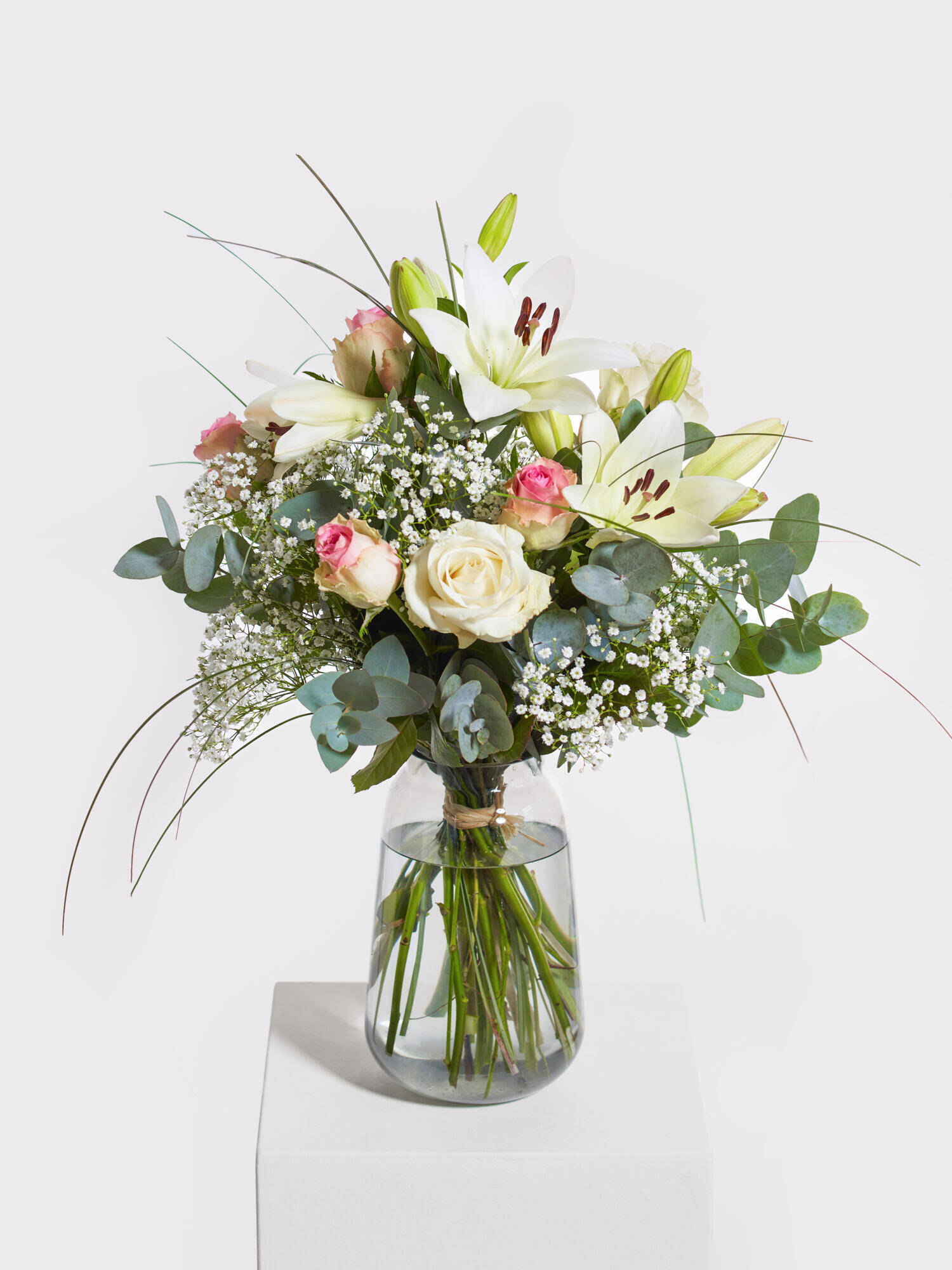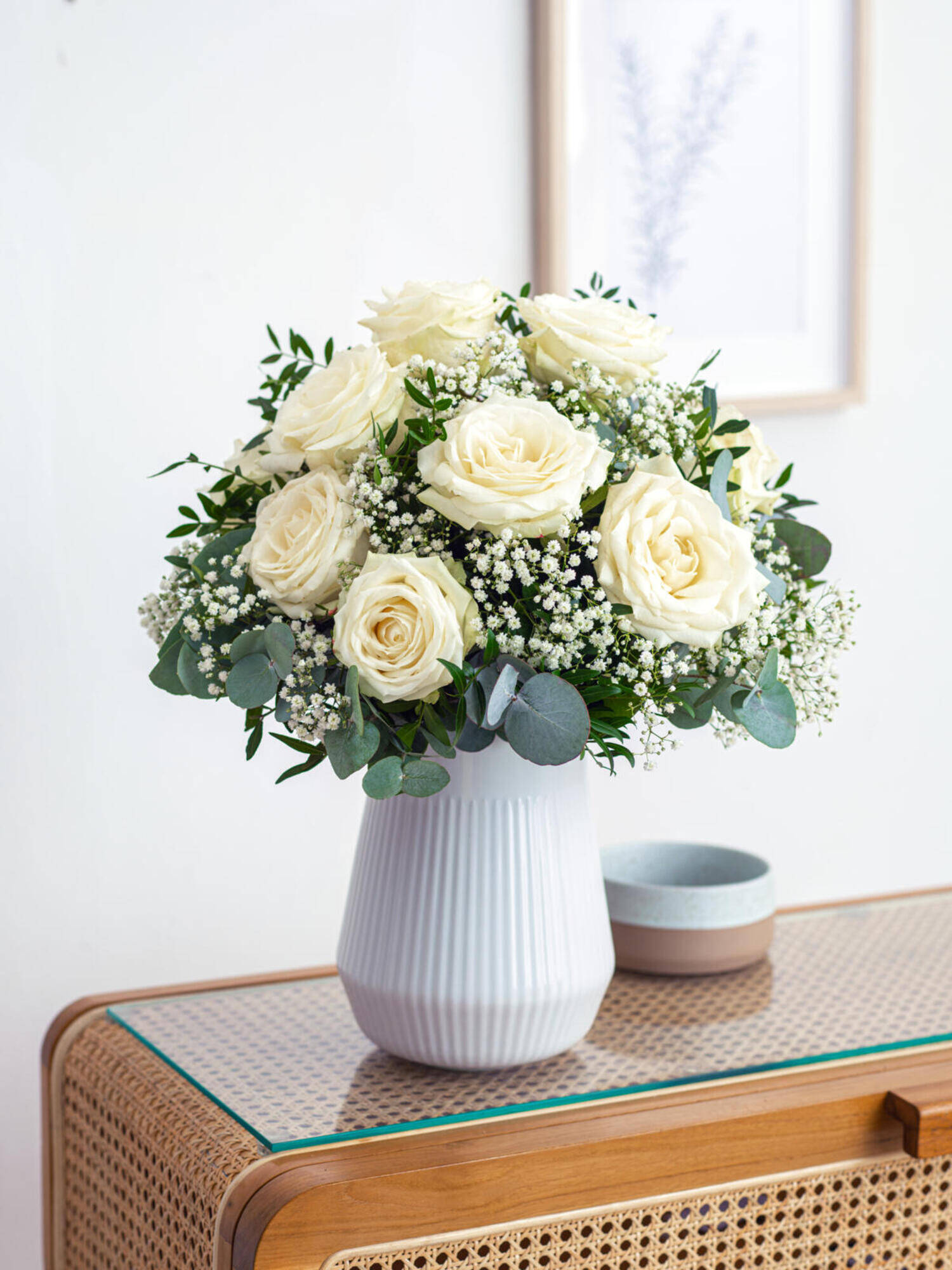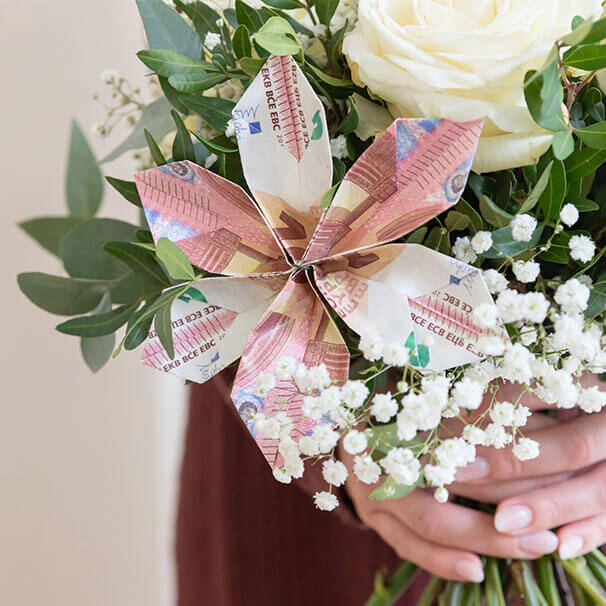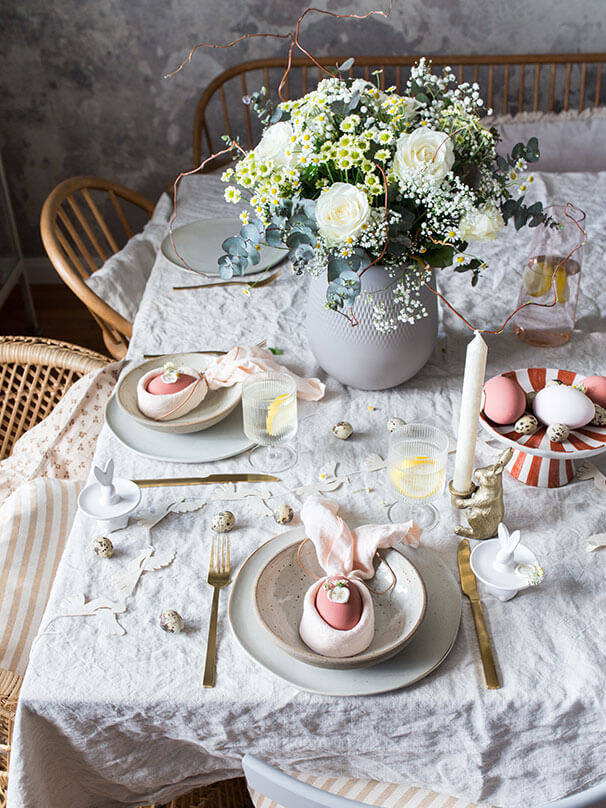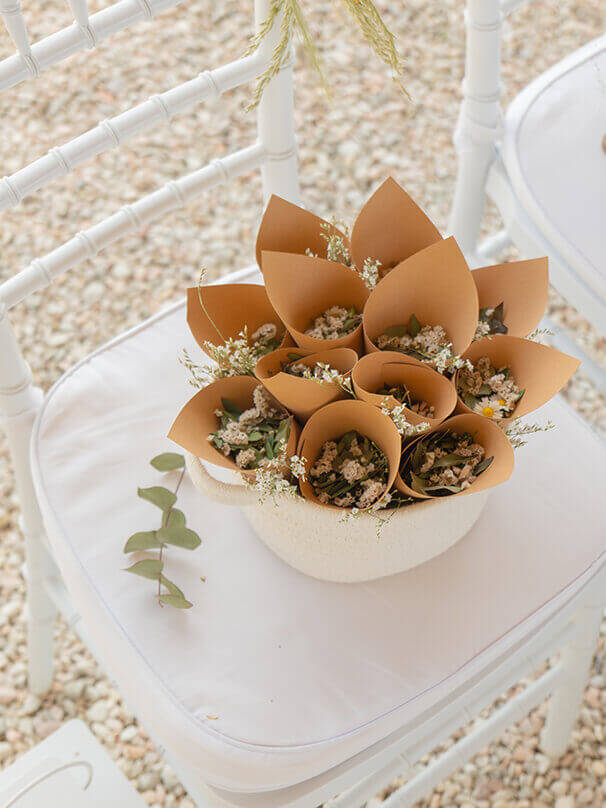Baby's breath – origin & care tips

The gypsophila, which is primarily known as a white-flowering perennial, is often seen as an accessory in cut flower bouquets. However, the airy stems of the plant - botanically known as Gypsophila - come from a perennial from the Caryophyllaceae family, the carnation family. The gypsophila is therefore ideal for planting in beds or containers, where it has a high ornamental value. Many white or pink star-shaped flowers develop on delicate stems well into autumn. The gypsophila cuts a particularly fine figure in cottage gardens or rose beds.
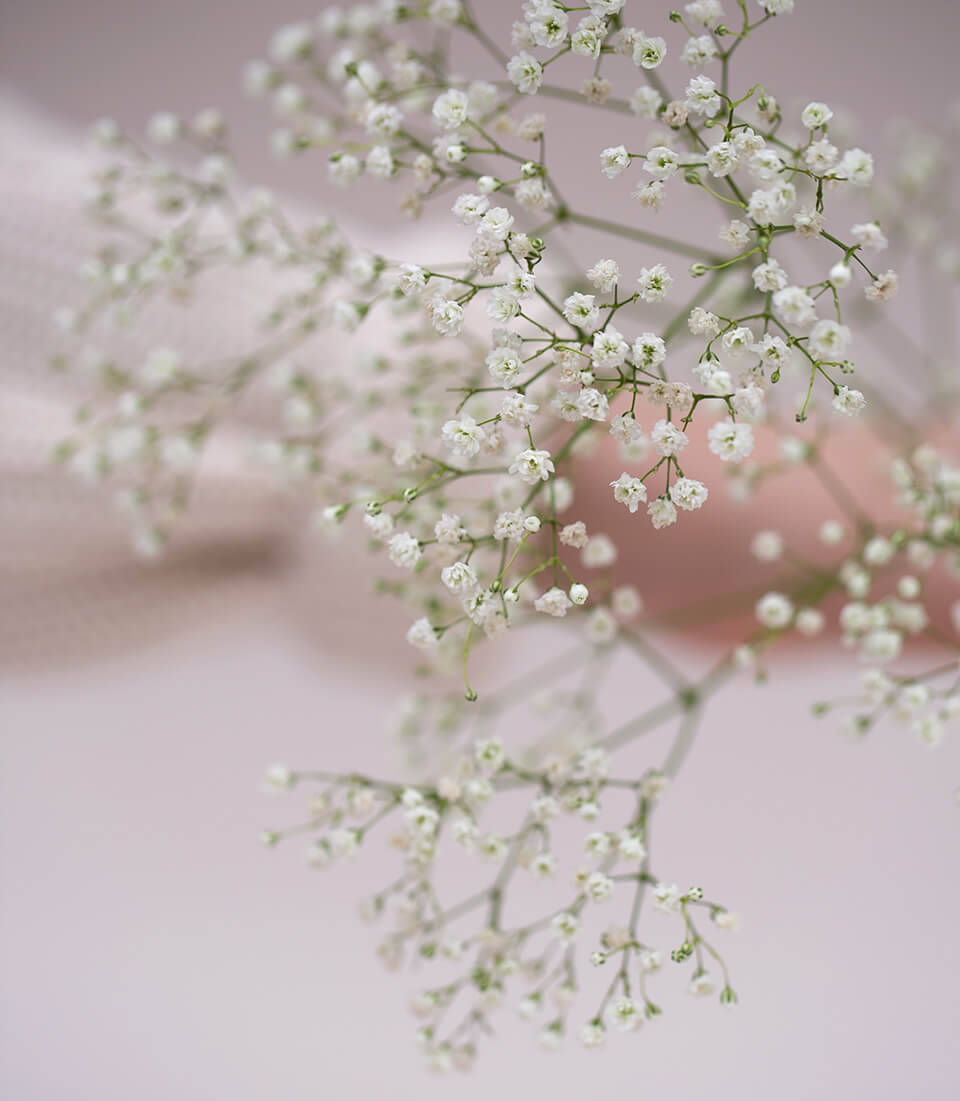
Appearance of the gypsophila
Growth
Gypsophila, known as an accessory in cut flower bouquets, delights with fragrant "clouds of flowers" in white or pink and grows into a rounded perennial about one metre tall.
The creeping gypsophila, on the other hand, tends to grow close to the ground and covers the ground.
As the name suggests, the carpet gypsophila also grows low, around 25 cm above the ground, and delights with its many small flowers.
As the gypsophila grows in a cloudy, tufa-like manner and can cover large areas of the ground, it is also known as gypsophila. Gypsophila is important in rock gardens, gardens on slopes and in sunny locations.
Leaves
The leaves of most gypsophila are small and lanceolate in shape, ranging from blue-green to grey-green.
Flowers
From June to autumn, gypsophila produces small white to pink flowers on its branched stems, which grow in panicles and bloom single to double.
The origin of the gypsophila
Gypsophila originates from Eastern, Central and Southern Europe, with original occurrences in Western Siberia and Mongolia, where it can be found in typically dry locations. They have also proliferated in Central Europe. Feral occurrences can be found on rubble heaps and dry, sandy, nutrient-poor soils. Gypsophila has spread as a neophyte on the American continent. The giant gypsophila in particular is found here.
Important species & varieties
Two species of gypsophila that are interesting in our latitudes grow perennially: Gypsophila paniculata, or panicled gypsophila, and Gypsophila repens, the carpet gypsophila. There are also a large number of varieties and hybrids that develop single and double flowers in colours ranging from white to pink.
How to care for gypsophila? Care tips & frequently asked questions
Gypsophila grows hardy as a perennial in our latitudes. Only in pots and containers should you ensure adequate winter protection.
One of the German names for gypsophila, namely gypsophila, indicates the ideal location, which should be calcareous. Gypsophila also loves loose, well-drained soil. Waterlogging must be avoided to prevent the roots from rotting. If you choose a poor soil in a sheltered, sunny location, you will create ideal conditions for this perennial.
Gypsophila flowers from June to autumn. Gypsohila is not poisonous to humans or animals. Nevertheless, all Gypsohila species should not be eaten.
Gypsophila is a perennial herb. It reproduces via long shoots that form from a thickened, turnip-like root and via seeds.
Yes, gypsophila can also be cultivated very well in a pot. Good drainage is important to avoid waterlogging. In winter, gypsophila must also be protected from too much moisture to prevent the roots from rotting.
The ideal time to plant is in spring. If you want to plant in autumn, you should not plant the perennial too late in the year so that it can take root well. Its flowering period then begins in June.
Bright and colourful summer flowers with the same flowering period go well with the full and cloudy-looking gypsophila. Roses are therefore suitable partners for gypsophila, as they complement the fragrant, light flowers very well. However, care should be taken here, as the soil requirements are not generally identical. Lavender, thistles, grasses such as feather grass or irises are also very attractive planting partners. Bulbous flowering plants with a flowering period slightly before that of the gypsophila can retract very well in the flower clouds and are therefore also well suited as partners.
The flower stems are very easy to dry and can be used for dried bouquets and flower arrangements. After harvesting the flower stems, the leaves are removed and the stems are hung upside down in a dry, airy place in the house to dry. Gypsophila or gypsophila is often used in floristry, for example to make wreaths.
Possible diseases and pests
Diseases of gypsophila include fungal infections, which can be recognised by dark discoloured stems and stunted growth. Unfortunately, the entire plant must then be disposed of. To prevent fungal infections, waterlogging should be avoided.
Animal pests include snails and hares/rabbits. On the one hand, rabbit wire or deterrents can help to keep the rodents away from the gypsophila, on the other hand, if there are signs of snail damage, the usual measures must be taken, such as collecting, spreading snail pellets or protecting the plants with a snail collar.












